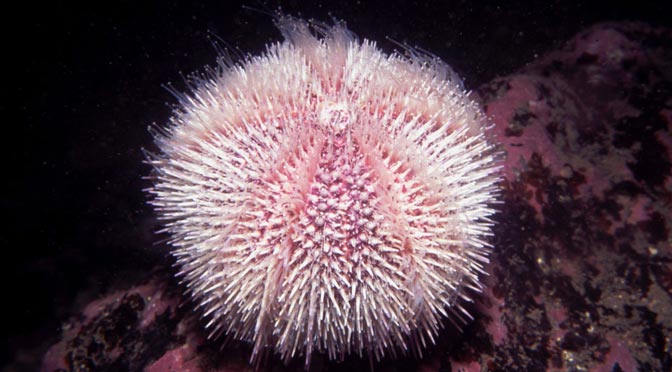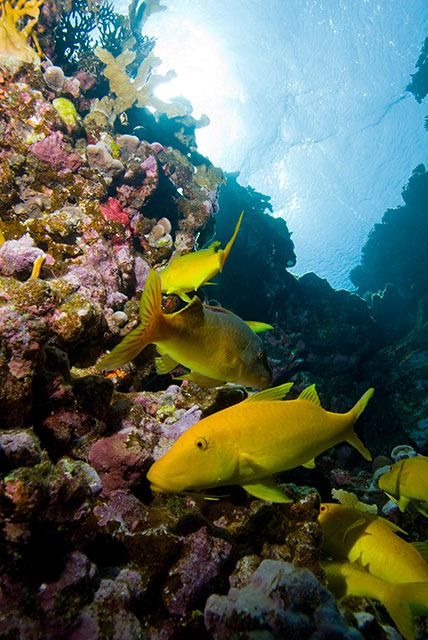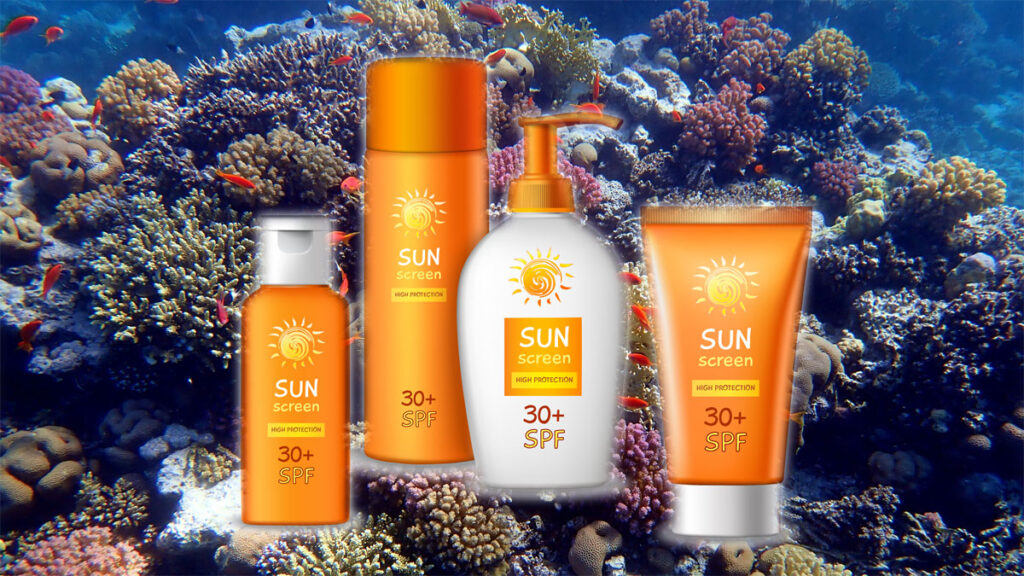It’s a minefield trying to buy a sunscreen which doesn’t harm the sea life. Even those trumpeting their green credentials are not always free from harmful chemicals and components. You have to read the label very carefully. So what are the nasties of which scuba divers and snorkellers should be wary?
Contents
Nanoparticles stress corals
Nano particles are minute chemical substances, which are about 100,000 times smaller than the diameter of a human hair.
Titanium dioxide and zinc oxide nanoparticles are often used in sunscreens. They allow clear sunscreen which can be sprayed on. However, they produce significant amounts of hydrogen peroxide, a strong oxidizing agent that generates high levels of stress on reef-building corals and marine phytoplankton. They have also been shown to make sea urchin embryos more vulnerable to toxins.

Try to avoid nanoparticles if you are looking for a marine-friendly sunscreen.
Oxybenzone affects coral reproduction
Scientists have shown that Oxybenzone (also known as Benzophenone-2 or BP-2) increases the rate of coral bleaching. Additionally, the chemical damages the coral’s dna, affecting their reproduction. If that wasn’t enough other effects are to make juvenile corals become grossly deformed and encase themselves with their own skeletons.

Octinoxate, Butylparaben, 4-Methylbenzylidene Camphor increase coral bleaching
Another study, led by Roberto Danovaro, named butylparaben, octinoxate and 4-methylbenzylidene camphor as being harmful to reefs.
How much sunscreen enters reef areas?
According to NOAA (National Oceanic and Atmospheric Administration) 4,000 to 6,000 tons of sunscreen enters reef areas annually. This does not spread out rapidly or evenly over the entire ocean, but concentrates on popular tourist sites. It is estimated that 90% of snorkellers and scuba divers are found on just 10% of the world’s reefs
So which are safe sunscreens to use?
Some examples of sunscreens which are less harmful to sea life are:
Badger Sunscreen
Shade all-natural sunscreen
 Image: Mark Doherty/iStockImage: Mark Doherty/iStock
Image: Mark Doherty/iStockImage: Mark Doherty/iStockWhat to look for in other brands
- Zinc oxide and Titanium dioxide are good as long as they are not in nano-format. A quick guide is whether the sunscreen is clear or not. If it is clear, or in a spray, it probably contains nano-particles.
- If the ingredients state “uncoated” zinc oxide then these are larger particles (non-nano).
- According to a report published by Wageningen Marine Research, the best sunscreens for the environment are those using titanium as the active ingredient.
References and Further Reading
More safe sunscreen articles, SCUBA News
Downs, C.A., Kramarsky-Winter, E., Segal, R. et al. Arch Environ Contam Toxicol (2016) 70: 265. doi:10.1007/s00244-015-0227-7
Danovaro, Roberto; Bongiorni, Lucia; Corinaldesi, Cinzia; Giovannelli, Donato; Damiani, Elisabetta; et al. Environmental Health Perspectives; Research Triangle Park116.4 (Apr 2008): 441-7.
The impacts of sunscreen on coral reefs. National Park Service, NOAA.
DME Slijkerman and M Keur. Sunscreen ecoproducts – Product claims, potential effects and environmental risks of applied UV filters, Wageningen Marine Research 2018.
Sunscreen and cosmetics compound may harm coral by altering fatty acids, American Chemistry Society 2019
Image credits:
- Yellowsaddle goatfish over healthy coral in Red Sea: Mark Doherty/iStock
